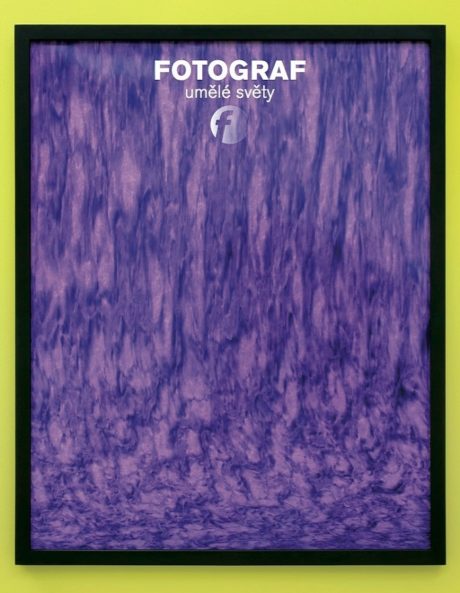Erik Sikora
Introspective, 4. 12. 2013 – 3. 1. 2014
Erik Sikora examines art through long-term stress tests. He tests art as an expansive luminary, as a free public space, as a medium for other media and as a possibility for life or directly for subsistence. For him art is thinking, visual music, dance, a game. He asks himself, and us as well, what might at first glance seem a banal, albeit fundamental, question: What is art for? Elsewhere he asks: Is it possible to make a respectable living from modern art or by using art? He systematically looks for answers. You can find ideas on how to sort out the aforementioned situations on the website: www.eriksikora.com.
For Eric the internet is not just an ocean with a cleansing effect. He constantly looks for the correct format or strategy; at other times he recycles environmentally. You could characterize him as an inconspicuous, but thorough, activist; a mental punker. He does not after all reject any option for dissemination or sharing. What the internet swallows up can be forgotten, or after some time (it can be) gutted and polished on a different shore. However, that which his waves carry can be accessed easily anytime, anyplace. Sikora’s exhibitions, concerts and performances thus are often an invitation to the future, a tasting, a promo for that which he has planned.
The Introspektiva (Introspective) exhibition is not a selection, but rather an enumeration. It contains all his video work up until 2011 (when Erik finished his studies at Prague’s Academy of Fine Arts (AVU) with his thesis work entitled, Tvoridlo). Imagine: 10 retro televisions – objects on the floor of the elegant, chilling white Fotograf Gallery in December. Videos run on all monitors at once; in an unwatchable, almost two-hour, loop.
With such an amount, when compared to the internet, any gallery will act as a limit: democratically and purely technically. But perhaps, in this case, it concerns another invitation someplace far away beyond the temporal border of 2011. This would be evidenced by the exhibition of printed tiles – artefacts from last year’s Čepanov final in Bratislava.
#23 artificial worlds
Archive
- #45 hypertension
- #44 empathy
- #43 collecting
- #42 food
- #41 postdigital photography
- #40 earthlings
- #39 delight, pain
- #38 death, when you think about it
- #37 uneven ground
- #36 new utopias
- #35 living with humans
- #34 archaeology of euphoria
- #33 investigation
- #32 Non-work
- #31 Body
- #30 Eye In The Sky
- #29 Contemplation
- #28 Cultura / Natura
- #27 Cars
- #26 Documentary Strategies
- #25 Popular Music
- #24 Seeing Is Believing
- #23 Artificial Worlds
- #22 Image and Text
- #21 On Photography
- #20 Public Art
- #19 Film
- #18 80'
- #17 Amateur Photography
- #16 Photography and Painting
- #15 Prague
- #14 Commerce
- #13 Family
- #12 Reconstruction
- #11 Performance
- #10 Eroticon
- #9 Architecture
- #8 Landscape
- #7 New Staged Photography
- #6 The Recycle Image
- #5 Borders Of Documentary
- #4 Intimacy
- #3 Transforming Of Symbol
- #2 Collective Authorship
- #1 Face


